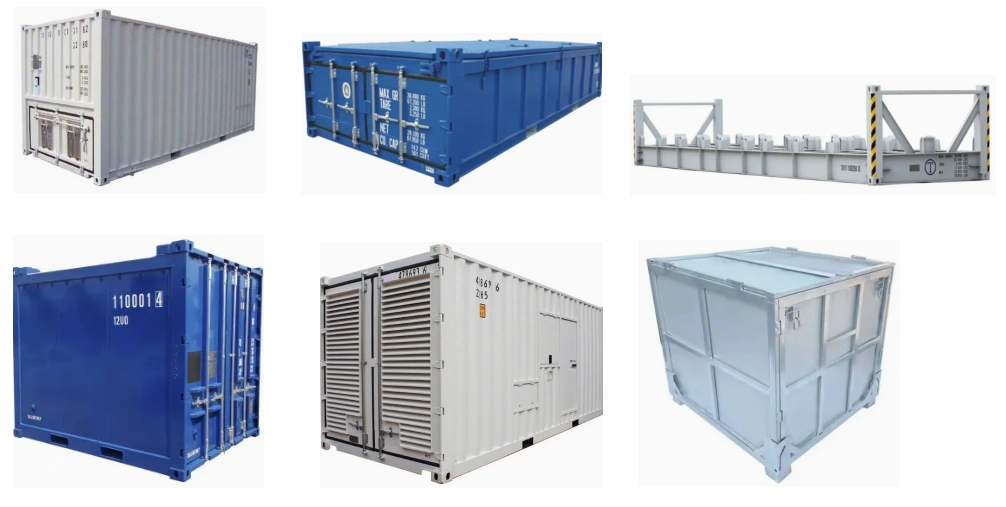
 English
English  简体中文
简体中文 Español
Español Português
Português русский
русский Français
Français 日本語
日本語 Deutsch
Deutsch tiếng Việt
tiếng Việt Italiano
Italiano Nederlands
Nederlands ภาษาไทย
ภาษาไทย Polski
Polski 한국어
한국어 Svenska
Svenska magyar
magyar Malay
Malay বাংলা ভাষার
বাংলা ভাষার Dansk
Dansk Suomi
Suomi हिन्दी
हिन्दी Pilipino
Pilipino Türkçe
Türkçe Gaeilge
Gaeilge العربية
العربية Indonesia
Indonesia Norsk
Norsk تمل
تمل český
český ελληνικά
ελληνικά український
український Javanese
Javanese فارسی
فارسی தமிழ்
தமிழ் తెలుగు
తెలుగు नेपाली
नेपाली Burmese
Burmese български
български ລາວ
ລາວ Latine
Latine Қазақша
Қазақша Euskal
Euskal Azərbaycan
Azərbaycan Slovenský jazyk
Slovenský jazyk Македонски
Македонски Lietuvos
Lietuvos Eesti Keel
Eesti Keel Română
Română Slovenski
Slovenski मराठी
मराठी
How to Choose the Right Special Container?
2025-08-05

Selecting an appropriate special container requires a comprehensive assessment based on specific usage scenarios, cargo characteristics, industry demands, and long-term operational goals. Below are key considerations and practical recommendations:
I. Clarify Core Needs and Scenario Positioning
1. Cargo Type and Characteristics
Physical Properties: For transporting liquids (e.g., chemical raw materials, oil), tank containers (compliant with explosion-proof and corrosion-resistant standards) are preferred. Large equipment or heavy machinery requires open-top or flat-rack containers for easy hoisting. Cold-chain goods (e.g., food, pharmaceuticals) necessitate refrigerated/freezer containers, with a focus on temperature control range (e.g., -25°C to 25°C) and thermal insulation performance.
Special Requirements: Dangerous goods must comply with the International Maritime Dangerous Goods Code (IMDG), requiring explosion-proof and anti-static designs. Precision instruments or electronics need shock-resistant containers equipped with cushioning systems and humidity control.
2. Application Scenarios
Transport Scenarios: Maritime transport demands containers resistant to wind, waves, and salt spray corrosion. Rail transport requires compatibility with track gauges and load-bearing standards. Road transport (trucking) must adhere to dimensional regulations (e.g., height and width limits).
Non-Transport Scenarios: For energy storage or mobile power stations, modular energy storage containers with integrated circuits and cooling systems are ideal. Temporary offices or accommodations prioritize modular building containers with emphasis on thermal insulation, soundproofing, and space efficiency.
II. Focus on Technical Performance and Customization Capabilities
1. Core Technical Parameters
Materials: Steel is cost-effective for general cargo, while aluminum alloy or stainless steel is required for corrosive environments. Lightweight needs (e.g., air transport) may favor composite material containers.
Structural Strength: Select load-bearing capacity based on cargo weight (e.g., 28 tons for standard 20-foot containers; higher capacities for custom special-purpose containers). Flat-rack containers require verification of beam and column compressive strength.
Functional Configurations: Refrigerated containers must have adequate refrigeration unit power (e.g., electric or diesel-driven) and endurance. Smart containers require confirmation of sensor types (temperature/humidity, positioning, vibration monitoring), data transmission methods (4G/5G, satellite), and compatibility with remote management platforms.
2. Customization and Adaptability
Industry-Specific Needs: The oil industry requires explosion-proof tank containers, agriculture needs ventilated containers for fresh produce, and healthcare demands sterile containers with disinfection systems.
Modular Design: Prioritize products supporting post-purchase modifications (e.g., adding partitions, shelving, or power generation equipment) to enhance versatility (e.g., dual-use for transport and storage).
III. Compliance and Safety Standards
1. Industry Certifications
International Transport: Comply with ISO standards (e.g., ISO 1496-3 for special containers). Dangerous goods containers must pass IMDG Code certification; refrigerated containers require ATP protocol (European temperature-controlled transport standards) or FDA (U.S. food and drug standards) compliance.
Domestic Use: Adhere to regulations such as the Road Transport Regulations and Railway Container Transport Rules. Special industries (e.g., chemicals, healthcare) may require additional industry-specific qualification reviews.
2. Safety Redundancy Design
Verify emergency braking, fire prevention, and leak-proof mechanisms (e.g., emergency shut-off valves for tank containers). Smart containers must include anomaly alerts (e.g., temperature overruns, tilt warnings).
IV. Balance Cost and Operational Efficiency
1. Total Lifecycle Cost
Initial Procurement Cost: Higher customization increases costs (e.g., energy storage containers cost 30%-50% more than standard dry containers). Evaluate cost-effectiveness based on usage frequency.
Maintenance and Energy Consumption: Refrigerated containers incur refrigeration energy costs and unit maintenance expenses. Steel containers require regular rust prevention, while aluminum alloy containers have lower maintenance costs but higher upfront investment.
2. Supply Chain Compatibility
Transport Tool Matching: Confirm container dimensions (20-foot, 40-foot, special extended types) fit trucks, rail flatcars, or ship holds.
Loading/Unloading Efficiency: Flat-rack and open-top containers require hoisting equipment; side-door containers facilitate forklift operations, improving efficiency.
V. Select Reliable Suppliers
1. Industry Experience and Cases: Prioritize manufacturers with successful cases in segmented fields.
2. After-sales Service: Confirm whether services such as installation and commissioning, maintenance, and component replacement are provided, especially software upgrade support for smart containers.
Summary
The core logic for selecting special containers is "demand alignment + compliance/safety + cost control." Begin by defining cargo characteristics, usage scenarios, and core functional requirements. Compare suppliers’ technical specifications, certifications, and track records to choose a product that meets current needs while offering scalability, avoiding over-customization costs or operational inefficiencies due to inadequate functionality.



